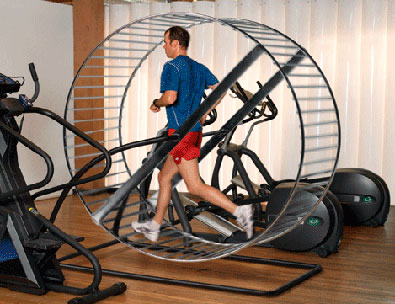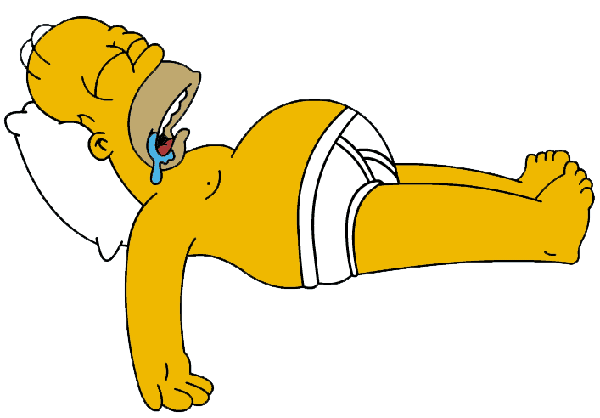Below is a list of some apps I've tried out, or thought people may be interested in. Links are provided below for itunes, but many of these apps are also available for android phones. There are a zillion health apps out there and a lot are low quality, so do some reading before you throw your money around.
Your mental and physical health is an important part of your life, so be willing to spend a few bucks on it. This list is just a handful of apps that I have found helpful.
Of course, if you want a great app for your health, take a look at twitter! There are a ton of people getting healthy that would love to tell you all about it! Check out our wellness twitter account:
@hbmwellness
This is a
comprehensive program for building, recording and personalizing workouts.
Pros: You tell it what muscles you want to work and
you can see a list of exercises and even watch videos on how to do the exercise
properly. You can follow their pre-made
workouts or build one of your own. You
can also see graphs of how your strength/endurance have improved over time. There is a free version if you want to try it out.
Cons: It's a big app and you can get a little lost if you are new to exercise. The app is geared towards weight lifting, which may not fit your goals.
This app has
nutritional information for over 30,000 foods at more than 200
restaurants! This is really useful when
you are traveling for work. Just because
work makes us travel doesn’t mean we have to get fat while we do it. It’s not perfect, but it’s pretty helpful.
Pros: It’s pretty
straight forward to use, and it’s free!
Cons: The ads can be
annoying and it doesn’t have all menu items for the restaurants.
This is a fantastic
app to anchor your health goals. There
are a lot of apps like this, but I think this is one of the easier apps to
use. It tracks your food, exercise,
weight, and all sorts of stuff.
Pros: It has a
ginormous database of foods built in and it’s pretty easy to add your own
foods. You can also add friends to help
you stay on track with your goals. It
also roughly estimates the calories you burn doing various exercises, and can
provide all sorts of helpful graphs.
Cons: It’s a inaccurate
on calculating how many calories you should be eating, so you’ll have to
manually adjust the numbers periodically.
A simple little app for tracking your blood pressure and
resting heart rate. I like to measure
how I am benefitting from my exercise and resting heart rate is one factor I
look at.
Pros: It’s a no
frills stat tracker that docs love cuz it tracks your blood pressure history for you. It even has an area for comments on the days stats (if you need it).
Cons: It’s boring,
but it does the job.
Train to do 100 pushups in a single sitting! Challenge friends and move up the ranks. If you don’t know how to do pushups at all,
this app will teach you how it’s done PROPERLY and then give you a pre-test to see where
you should begin. You can start at 0
pushups and work all the way up to 200.
Pros: Unlike some
other pushup programs, the graduated workouts increase in difficulty slowly so
I was less likely to give up. Also, the
ipod/iphone will tell you if you are doing the pushups too slow or fast, so
it’s a good trainer. The battle mode is
pretty fun because you can challenge people who are at your own level. I got a lot more out of my workouts when I
was competing with someone.
Cons: You’ll need a
good armband for your ipod/iphone since this runs on an accelerometer.
CrunchFu - $.99
This is the same as Pushup Fu, but it trains you on doing up
to 200 crunches!
Squatfu - $.99
This is the same as Pushup Fu, but it trains you on doing up
to 200 Squats!
Cons: The accelerometer
is tricky on this one. It takes some
getting used to.
FitFu is like the facebook of exercise. It is the big brother of the other 'FU' apps. It allows you to earn points for exercising
and helping your friends to exercise. If you are starting out with exercise and need to start small, this is a good way to do it.
Pros: I like this app
because it’s a motivating way to keep people exercising when there isn’t a gym
around. It's fun. The app tracks your personal
best in all the exercises. It’s got a
good interface and connects with facebook and twitter. It will also TEACH you to do all sorts of exercises.
Cons: Aside from being expensive, the success of
the app relies on social pressure to keep you exercising You need people who are going to do it with
you.
This is a great app that I own. If you are working on losing a significant amount of weight or want to put on a lot of muscle, this is an important app. Not all progress gets reflected in your weight! This app also tracks your body fat % and all sorts of measurements. Best of all it lets you take pictures of yourself so that you can see the slow changes you are making over time. The pics came be stored privately so you don't have to worry about them being accessible to others.
Pros: This app can help keep you motivated when your progress is slow. You can always go back and look at the pics of how fat and sloppy you used to be.
Cons: The app doesn't lie. You can't keep lying to yourself about the condition of your body and the app will show you the truth. (It's kind of a pro, right?)
This is my go to app for health. It will help you find a healthy goal weight, determine your basal metabolic rate and do other important calculations. Best of all, their numbers are based on real science. They will help you get healthy in a reasonable way without starving yourself or going on dangerous diets. The makers of the app also have a pretty good
podcast that I listen to occasionally to keep my motivation up.
Pros: Good science, reasonable goals
Cons: none!
This is a breathing app that will help you relax your mind and body. It tells you when to breathe in and out and has numerous levels of difficulty that you can work towards. The time you spend in the breathing app is very customizable and quiet relaxing.
Pros: The free version will work for most people. If you want some of the benefits of meditation in an easy format this is for you.
Cons: I eventually realized that actual meditation provided more benefits and moved on to other apps. I would use the free version for a few weeks before spending the money.
There are a bunch of free meditation timers out there. I paid for this one because it is pretty customizable and has some built in sounds. Chimes, fountains, etc. There are a fair number of options to customize your meditation experience.
Pros: This is one of the better of meditation apps.
Cons: There are other apps that are better at sounds. I use another app if I want white noise. Also, there are plenty of free meditation timer apps. Don't pay money for a meditation app until AFTER you decide you are gonna be using it long term.
Last I checked this was only available for android. Sorry! This is a great app if you want to gain the health and mental refreshment that comes from meditation - but in an easier way. This apps give you quotes and principles to ponder during your mediation time. The quotes are designed to help you be more aware of your life and the state of your own mind. Although the principles are based on Buddhism, no particular religiosity is needed.
This is the King Kong of white noise apps. I use it for mediation and relaxation, but the possible uses of this app are endless. It is easily worth 3 bucks. It has high quality sounds in numerous areas. For any kind of sound you want to hear, someone has a recording of it. Buying the app gives you access to a huge online library of all kinds of soundscapes. The app also includes a timer and an alarm.
Pros: Awesomeness, great sound library
Cons: Kind of expensive, but well worth it.














